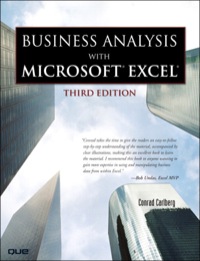Assume that the assumptions of the single factor model hold. The estimates of the single index model for the stocks of RBC and TD are presented below: Stock RBC TD Intercept 0.04 -0.03 Beta 0.6 0.9 R-squared 20% 15% The S&P/TSX index was used as a proxy for the market index to obtain these results. In addition, the standard deviation of the S&P/TSX index is estimated at Om = 0.30. a) What is the standard deviation of each stock? [4 marks) b) Break down the variance of each stock into its systematic and firm-specific components. [8 marks] c) What is the covariance and correlation coefficient between the two stocks? [2 marks] d) What is the covariance between each stock and the S&P/TSX index? [4 marks) e) Are the intercepts of the two regressions consistent with the CAPM? Why? (Interpret your results). [2 marks] In addition, you are presented with the following portfolios: Portfolio Weights S&P/TSX index RBC T-bills 0.60 0.30 TD 0.40 0.20 0.30 0.20 f) What is the standard deviation of each portfolio? (4 marks) g) Break down the variance of each portfolio into its systematic and firm-specific components. [8 marks] h) What is the covariance between each portfolio and the S&P/TSX index? [4 marks] Hint: Notice that portfolio B can be seen as a portfolio that has a weight of 0.5 on portfolio A, 0.3 on the S&P/TSX index, and 0.2 on T-bills. Assume that the assumptions of the single factor model hold. The estimates of the single index model for the stocks of RBC and TD are presented below: Stock RBC TD Intercept 0.04 -0.03 Beta 0.6 0.9 R-squared 20% 15% The S&P/TSX index was used as a proxy for the market index to obtain these results. In addition, the standard deviation of the S&P/TSX index is estimated at Om = 0.30. a) What is the standard deviation of each stock? [4 marks) b) Break down the variance of each stock into its systematic and firm-specific components. [8 marks] c) What is the covariance and correlation coefficient between the two stocks? [2 marks] d) What is the covariance between each stock and the S&P/TSX index? [4 marks) e) Are the intercepts of the two regressions consistent with the CAPM? Why? (Interpret your results). [2 marks] In addition, you are presented with the following portfolios: Portfolio Weights S&P/TSX index RBC T-bills 0.60 0.30 TD 0.40 0.20 0.30 0.20 f) What is the standard deviation of each portfolio? (4 marks) g) Break down the variance of each portfolio into its systematic and firm-specific components. [8 marks] h) What is the covariance between each portfolio and the S&P/TSX index? [4 marks] Hint: Notice that portfolio B can be seen as a portfolio that has a weight of 0.5 on portfolio A, 0.3 on the S&P/TSX index, and 0.2 on T-bills







